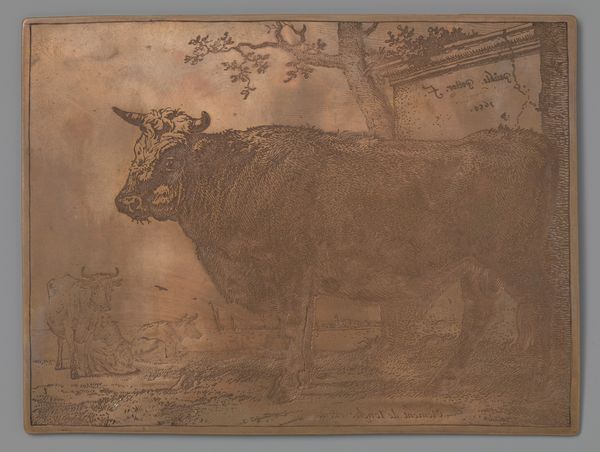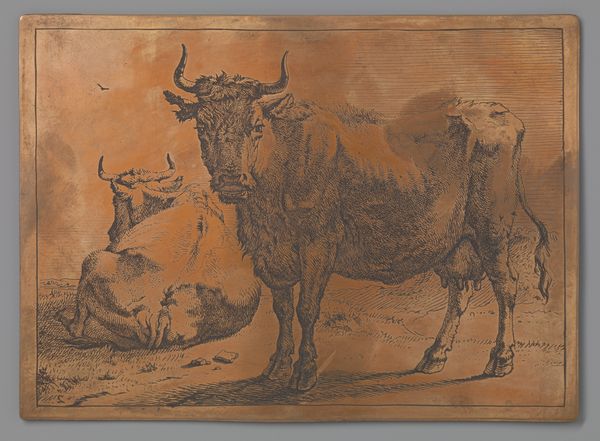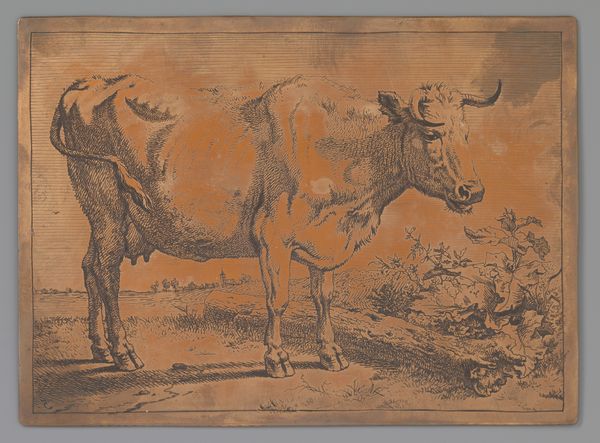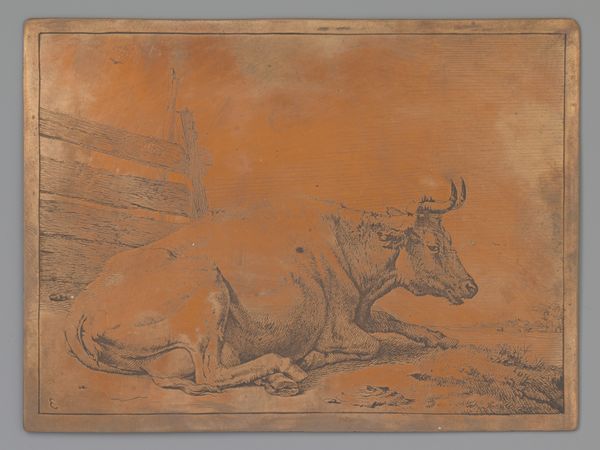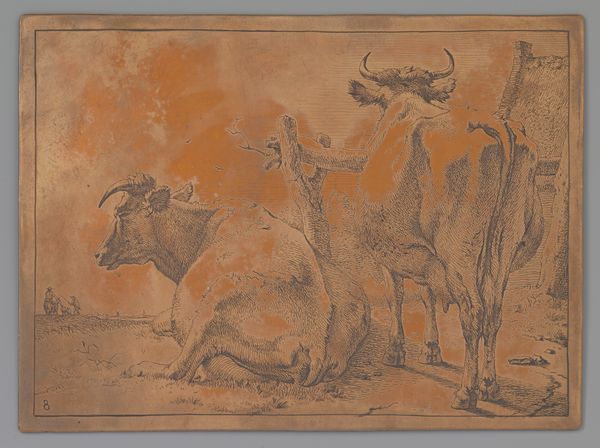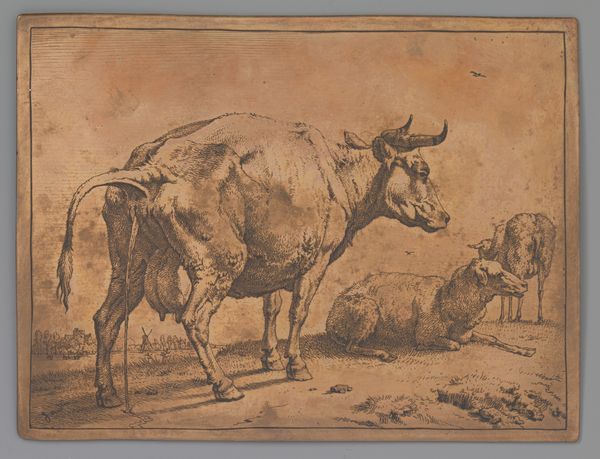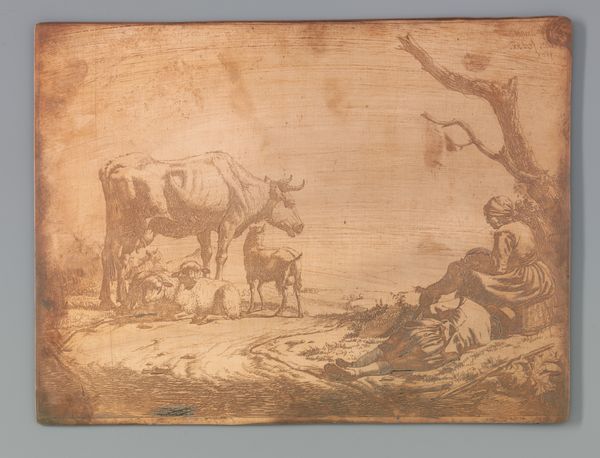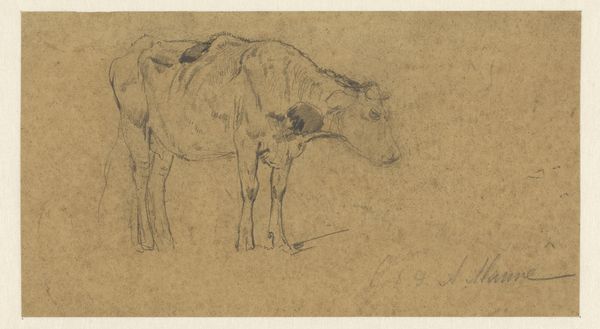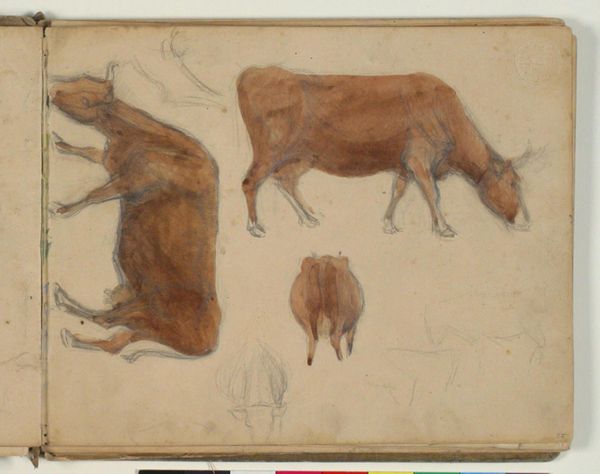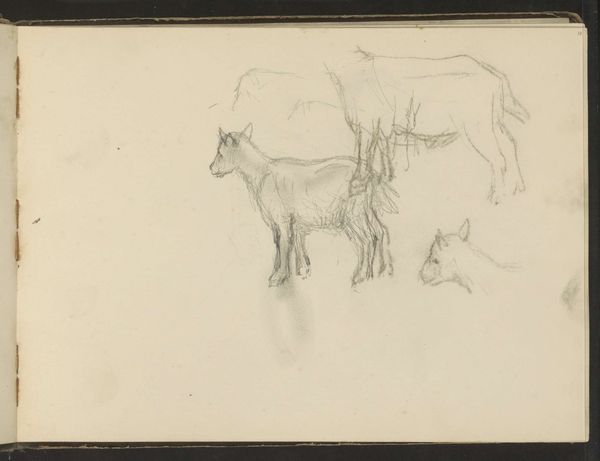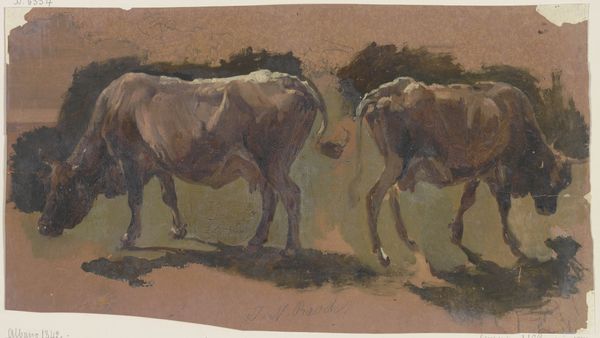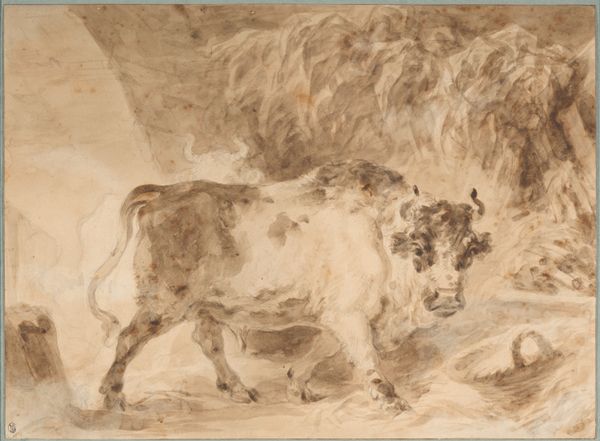
drawing, ink
#
drawing
#
ink painting
#
dutch-golden-age
#
landscape
#
ink
#
genre-painting
#
realism
Dimensions: height 107 mm, width 148 mm
Copyright: Rijks Museum: Open Domain
Curator: Paulus Potter's "Grazende Koe," or "Grazing Cow," created around 1650, offers a striking portrayal of pastoral life in the Dutch Golden Age. The work is ink on paper. Editor: My first thought is how massive the foreground cow feels. It’s almost bursting out of the frame with such presence and weight. The muted earth tones contribute to this feeling of grounded solidity. Curator: Potter’s cows weren't merely cows; they reflected the Netherlands’ burgeoning national identity and pride in its agricultural prowess. Land reclamation and husbandry were potent symbols. Think about the socio-economic implications here. Editor: Absolutely. The Dutch Golden Age wasn't just about trade; it was deeply intertwined with agricultural innovation. Could we view this intimate depiction of the cow as an emblem of national prosperity and an unspoken understanding of a society's relationship to food production, maybe even its food security? Curator: Precisely! The scale you noted plays a crucial role. By monumentalizing these creatures, Potter elevated the animal, symbolizing both Holland's rural economy and the importance of agriculture within the societal structure. Furthermore, he disrupts established hierarchy in art. Editor: The steeple visible in the background reminds me that society is not far off; nature and culture seem so tightly linked. The soft rendering, particularly in the animal’s fur and muscle definition, feels tender and insightful. But who would this artwork really have been intended for? Curator: Consider the burgeoning merchant class—these works affirmed their own elevated positions. Depictions of pastoral beauty suggested they, too, were now inheritors of Holland's 'Golden Age.' This, alongside their growing importance, meant a reshaped idea of class identity in Dutch society. Editor: This wasn’t simply documentation. This cow assumes an identity, and a symbol that reflects society's interwoven components. Thanks for offering some fascinating background for thought. Curator: Likewise; viewing Potter’s "Grazing Cow" through this lens offers a richer, socially informed experience of 17th-century Holland.
Comments
No comments
Be the first to comment and join the conversation on the ultimate creative platform.
